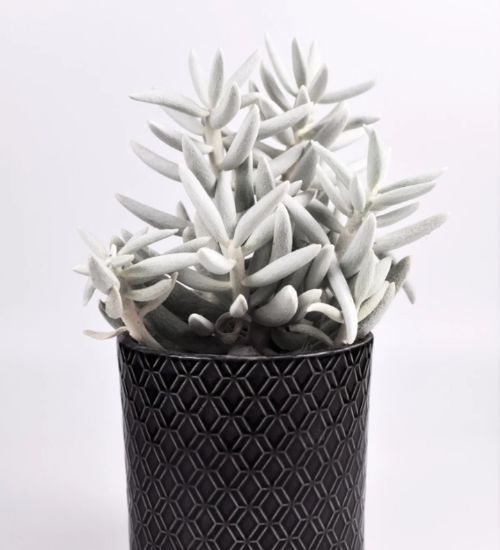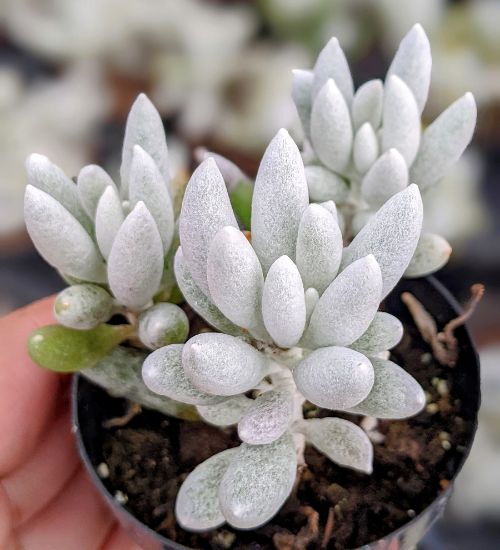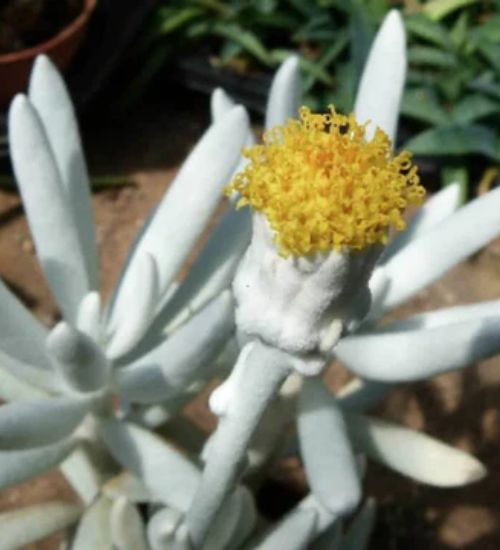Sun: full sun to partial shade
Water: Typical water needs for a succulent
Temperature: Zone 10a from 30° F to 35° F (-1.1 ° C to 1.7° C)
Winter Survival: Not cold hardy
Propagation: leaves, stem cuttings
Flower: in the summer
Flower Type:
Toxic: Generally non-toxic to humans but can be toxic to animals.
Dormant: summer
Space Requirement: Indoors & Outdoors
Common Problems: No major pests, Plants may rot if overwatered
Where to buy Senecio haworthii?
Basc Care for Senecio haworthii
Watering
Regular watering period should be every 2 weeks
Can you water your succulent more than what its need? The answer is yes and no. In extreme conditions, you can water your plants more often when you notice the soil is completely dry.
Fertilizing
Only feed this succulent during its active growing seasons which means spring and fall. Use the right fertilizer applied in the right amounts. Applying half-strength balanced fertilizer every month or so is recommended for optimal results.
Do not fertilize during summer as the plant is dormant.
Sun & Location Requirements for "Cocoon Plant, Wooly Senecio"
Senecio haworthii does best when placed in an area that receives full sun to partial shade throughout the day. This variety of succulents can tolerate direct sunlight for short periods, but if the temperatures get too high or the light is too intense it may be beneficial to find a shadier spot.
As per this succulent profile, it is only able to stay healthy when the environment temperature is above the range of zone 10a from 30° F to 35° F (-1.1 ° C to 1.7° C).
In order to ensure that Senecio haworthii survives the winter, insulation and drainage are essential. A layer of mulch or gravel around the plant can help keep the roots warm during cold temperatures. Furthermore, avoiding exposure to wind and sun can reduce the risk of frost damage and promote longevity for your succulent.
Senecio haworthii also benefits from some indirect light throughout the day as well, so make sure you give it enough space to soak up light without becoming too exposed to heat.
Propagation
Propagating succulents with leaves is a satisfying way to obtain new plants. Start by cutting some healthy leaves from the mother plant, then place them on top of potting mix and water regularly. In time you'll have vibrant succulents that you grew yourself!
One of the easiest and most popular ways to propagate Senecio haworthii is by stem cuttings. This method involves cutting a stem from an existing succulent and planting it in soil to grow a new plant.
Toxicity

Before deciding to bring Senecio haworthii into your home, it’s important to know that these plants may be toxic to animals. The saponins in the leaves can cause harm if ingested, so take precautions to ensure pets cannot access these plants. With proper care and vigilance, you can safely enjoy the beauty of this succulent without worry.
Pests and Diseases
Senecio haworthii is not affected too much by common pests and diseases like most of the other succulents.
It may get attacked by %pest_names%. To prevent this from happening, keep your succulent in a well-ventilated area and check it regularly for any signs of pests or health problems. If you do spot any, treat the plant using below methods.
%pest_treatment_methods%


